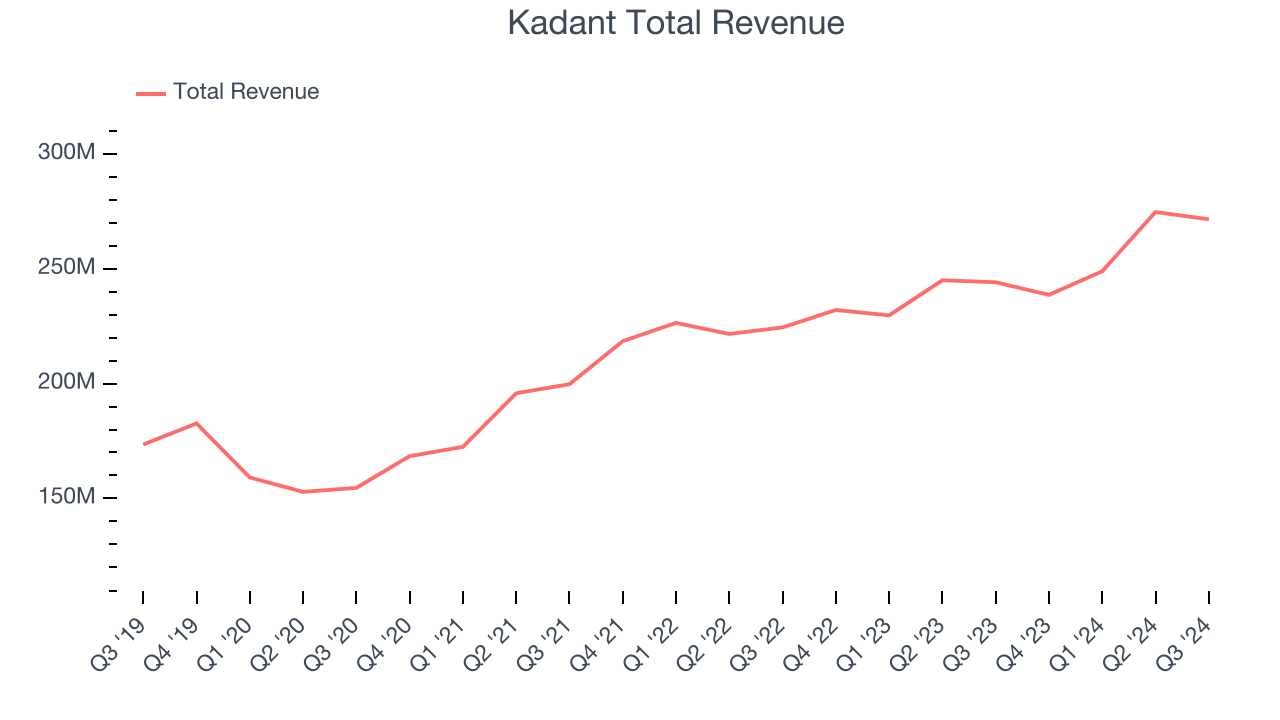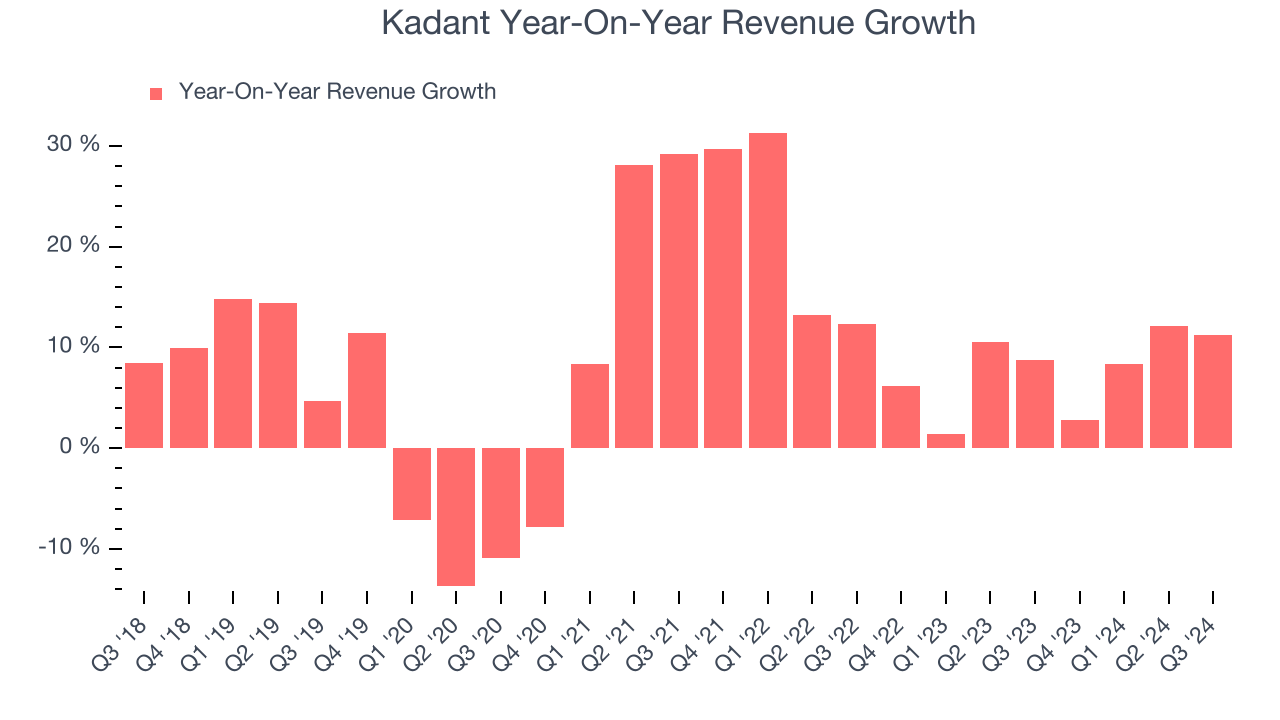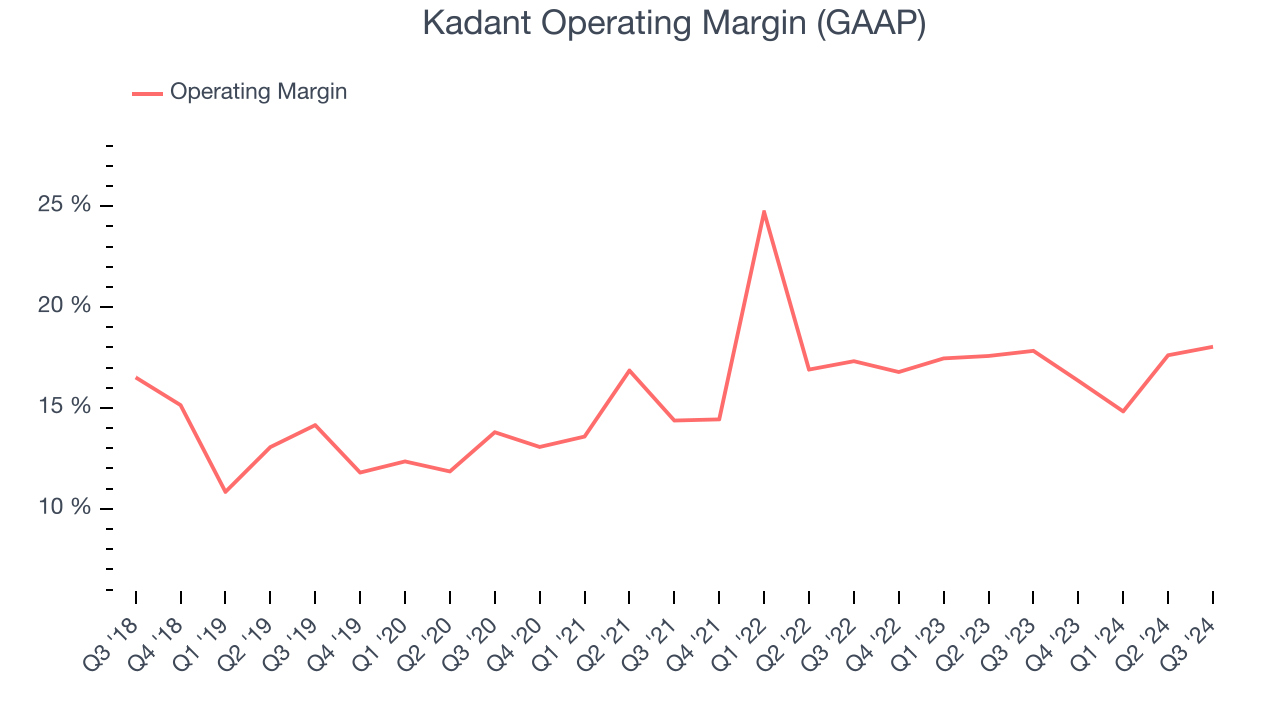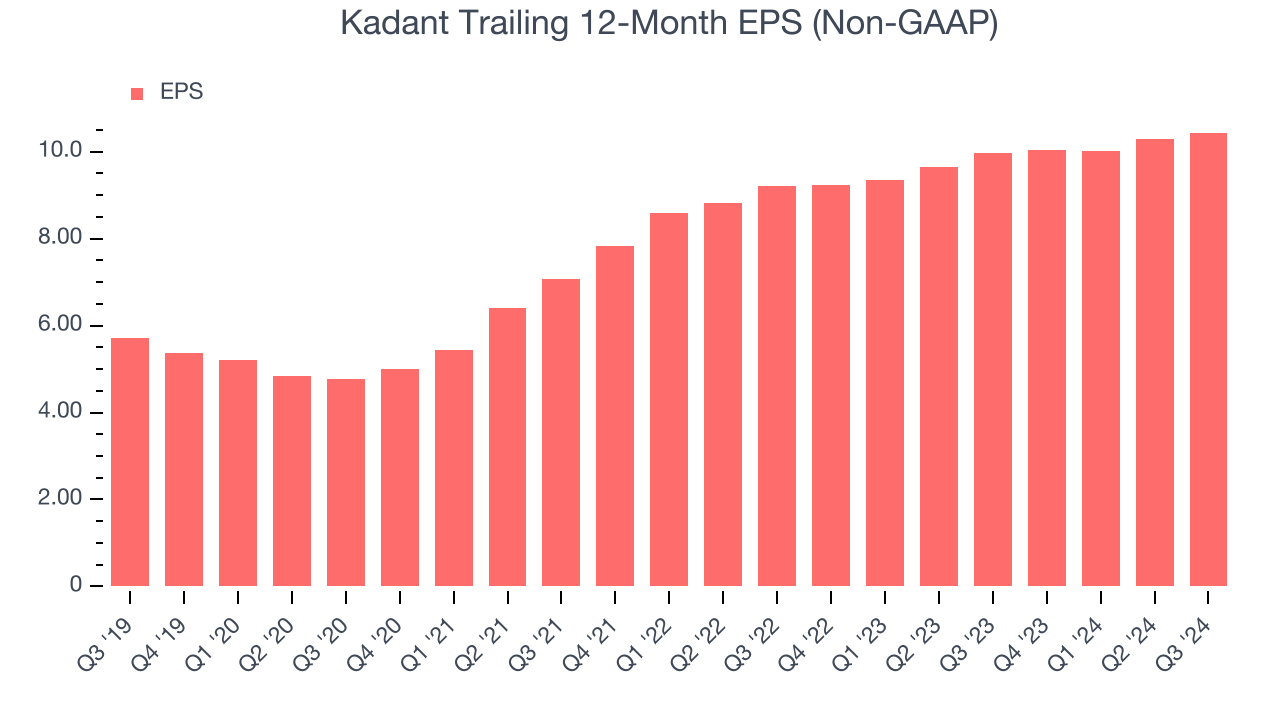
Industrial equipment manufacturer Kadant (NYSE: KAI) reported Q3 CY2024 results beating Wall Street’s revenue expectations, with sales up 11.2% year on year to $271.6 million. On the other hand, next quarter’s revenue guidance of $256 million was less impressive, coming in 2.7% below analysts’ estimates. Its non-GAAP profit of $2.84 per share was also 16.9% above analysts’ consensus estimates.
Is now the time to buy Kadant? Find out by accessing our full research report, it’s free.
Kadant (KAI) Q3 CY2024 Highlights:
- Revenue: $271.6 million vs analyst estimates of $266.4 million (2% beat)
- Adjusted EPS: $2.84 vs analyst estimates of $2.43 (16.9% beat)
- EBITDA: $63.26 million vs analyst estimates of $57.8 million (9.4% beat)
- Revenue Guidance for Q4 CY2024 is $256 million at the midpoint, below analyst estimates of $263.1 million
- Management raised its full-year Adjusted EPS guidance to $10.03 at the midpoint, a 1.1% increase
- Gross Margin (GAAP): 44.7%, up from 43.3% in the same quarter last year
- Operating Margin: 18%, in line with the same quarter last year
- EBITDA Margin: 23.3%, up from 21.6% in the same quarter last year
- Free Cash Flow Margin: 17.8%, up from 15.6% in the same quarter last year
- Market Capitalization: $3.78 billion
Management Commentary“We delivered another solid quarter with excellent operational execution leading to outstanding margin performance and record adjusted EPS,” said Jeffrey L. Powell, president and chief executive officer of Kadant Inc.
Company Overview
Headquartered in Massachusetts, Kadant (NYSE: KAI) is a global supplier of high-value, critical components and engineered systems used in process industries worldwide.
General Industrial Machinery
Automation that increases efficiency and connected equipment that collects analyzable data have been trending, creating new demand for general industrial machinery companies. Those who innovate and create digitized solutions can spur sales and speed up replacement cycles, but all general industrial machinery companies are still at the whim of economic cycles. Consumer spending and interest rates, for example, can greatly impact the industrial production that drives demand for these companies’ offerings.
Sales Growth
Examining a company’s long-term performance can provide clues about its business quality. Any business can put up a good quarter or two, but the best consistently grow over the long haul. Thankfully, Kadant’s 8.6% annualized revenue growth over the last five years was decent. This is a useful starting point for our analysis.

We at StockStory place the most emphasis on long-term growth, but within industrials, a half-decade historical view may miss cycles, industry trends, or a company capitalizing on catalysts such as a new contract win or a successful product line. Kadant’s annualized revenue growth of 7.7% over the last two years aligns with its five-year trend, suggesting its demand was stable. 
Kadant also breaks out the revenue for its three most important segments: Fluid Handling, Industrial Processing, and Material Handling, which are 35.9%, 40.8%, and 23.3% of revenue. Over the last two years, Kadant’s revenues in all three segments increased. Its Fluid Handling revenue (piping, cleaning, and filtration) averaged year-on-year growth of 4.3% while its Industrial Processing (paper and timber processing equipment) and Material Handling (wood production equipment) revenues averaged 8.6% and 13.5%.
This quarter, Kadant reported year-on-year revenue growth of 11.2%, and its $271.6 million of revenue exceeded Wall Street’s estimates by 2%. Management is currently guiding for a 7.3% year-on-year increase next quarter.
Looking further ahead, sell-side analysts expect revenue to grow 4.7% over the next 12 months, a deceleration versus the last two years. This projection doesn't excite us and illustrates the market believes its products and services will see some demand headwinds.
Unless you’ve been living under a rock, it should be obvious by now that generative AI is going to have a huge impact on how large corporations do business. While Nvidia and AMD are trading close to all-time highs, we prefer a lesser-known (but still profitable) semiconductor stock benefitting from the rise of AI. Click here to access our free report on our favorite semiconductor growth story.
Operating Margin
Operating margin is a key measure of profitability. Think of it as net income–the bottom line–excluding the impact of taxes and interest on debt, which are less connected to business fundamentals.
Kadant has been a well-oiled machine over the last five years. It demonstrated elite profitability for an industrials business, boasting an average operating margin of 16.2%. This result isn’t surprising as its high gross margin gives it a favorable starting point.
Analyzing the trend in its profitability, Kadant’s annual operating margin rose by 4.3 percentage points over the last five years, showing its efficiency has improved.

In Q3, Kadant generated an operating profit margin of 18%, in line with the same quarter last year. This indicates the company’s cost structure has recently been stable.
Earnings Per Share
We track the long-term change in earnings per share (EPS) for the same reason as long-term revenue growth. Compared to revenue, however, EPS highlights whether a company’s growth was profitable.
Kadant’s EPS grew at a remarkable 12.8% compounded annual growth rate over the last five years, higher than its 8.6% annualized revenue growth. This tells us the company became more profitable as it expanded.

Diving into the nuances of Kadant’s earnings can give us a better understanding of its performance. As we mentioned earlier, Kadant’s operating margin was flat this quarter but expanded by 4.3 percentage points over the last five years. This was the most relevant factor (aside from the revenue impact) behind its higher earnings; taxes and interest expenses can also affect EPS but don’t tell us as much about a company’s fundamentals.
Like with revenue, we analyze EPS over a shorter period to see if we are missing a change in the business.
For Kadant, its two-year annual EPS growth of 6.4% was lower than its five-year trend. We hope its growth can accelerate in the future.In Q3, Kadant reported EPS at $2.84, up from $2.69 in the same quarter last year. This print easily cleared analysts’ estimates, and shareholders should be content with the results. Over the next 12 months, Wall Street expects Kadant’s full-year EPS of $10.44 to shrink by 1.8%.
Key Takeaways from Kadant’s Q3 Results
We liked that Kadant beat analysts’ revenue, EBITDA, and EPS expectations this quarter. On the other hand, revenue and EPS guidance for next quarter came in below expectations. Overall, the quarter was solid but the outlook was tepid. The stock remained flat at $320.55 immediately following the results.
So should you invest in Kadant right now?When making that decision, it’s important to consider its valuation, business qualities, as well as what has happened in the latest quarter. We cover that in our actionable full research report which you can read here, it’s free.





